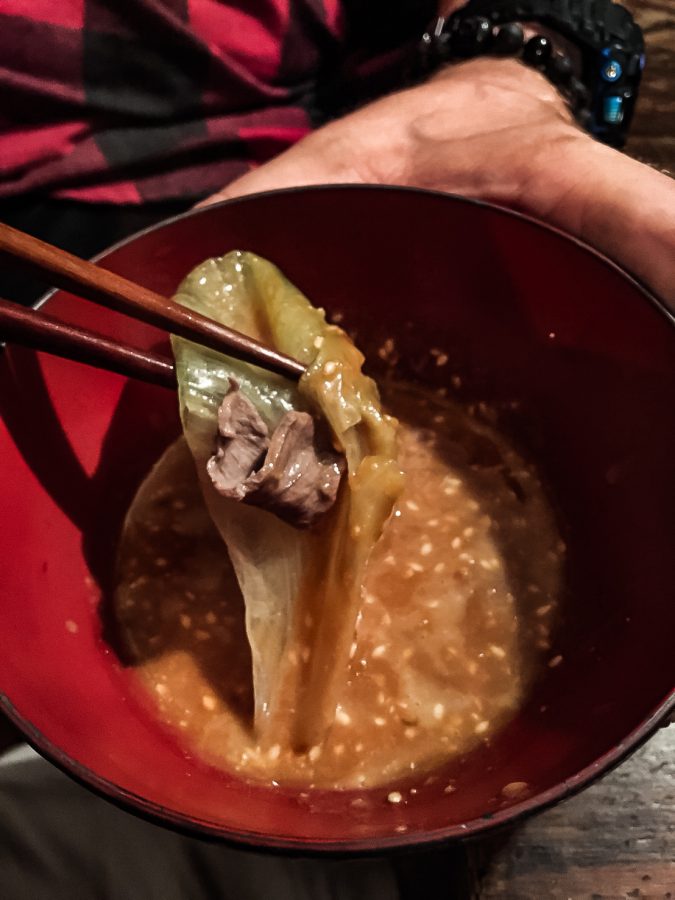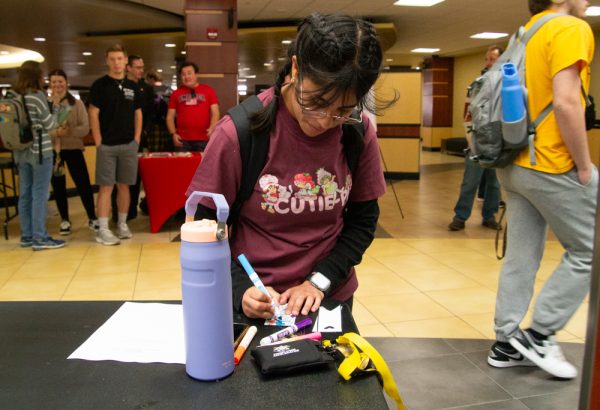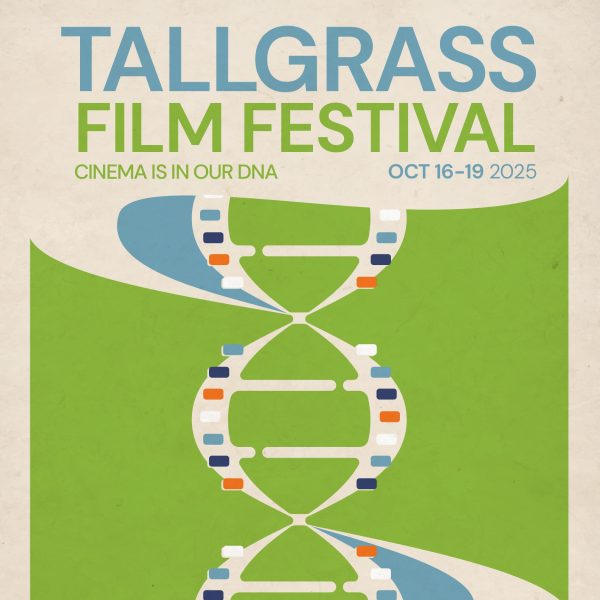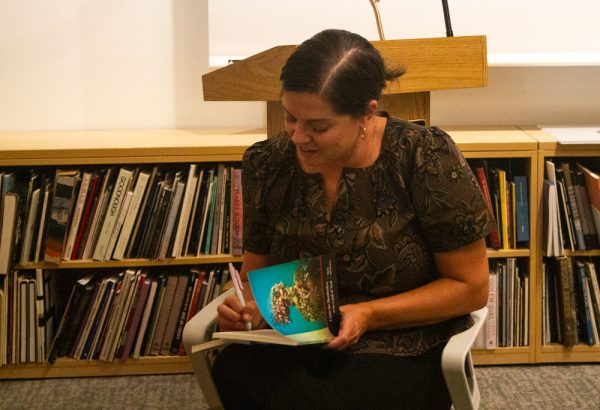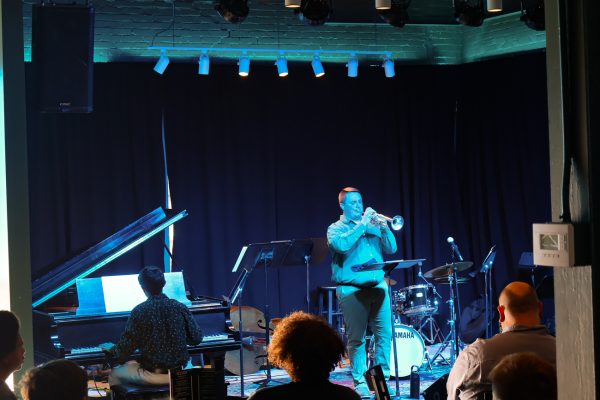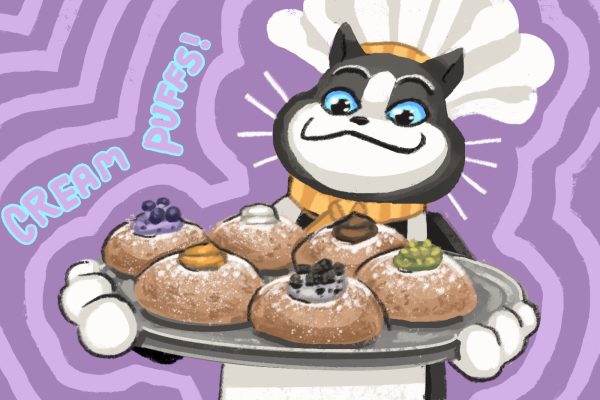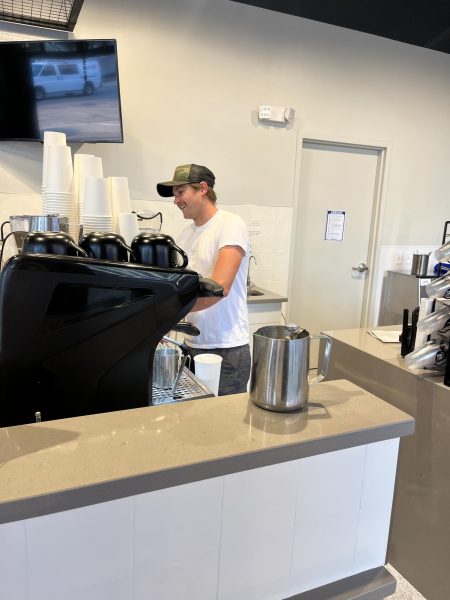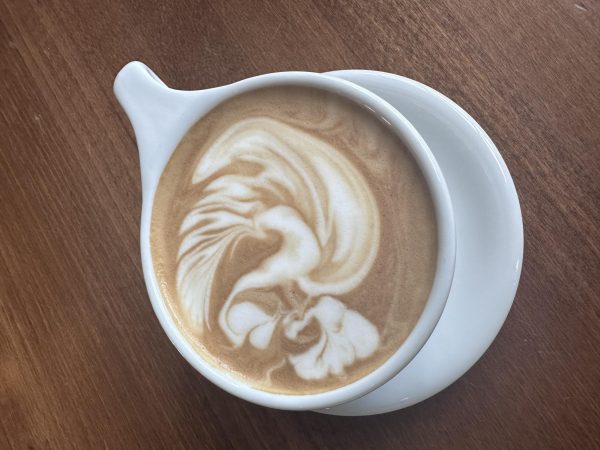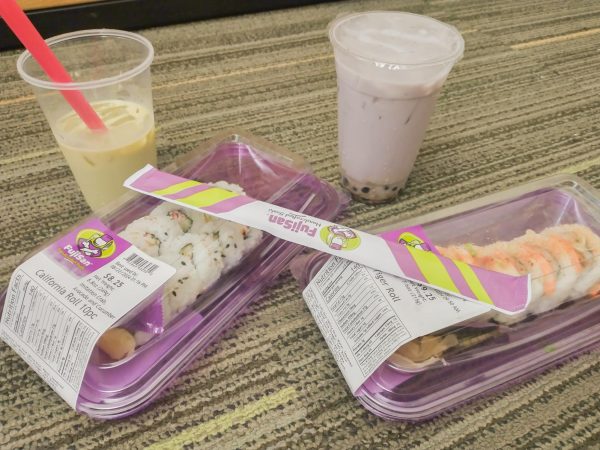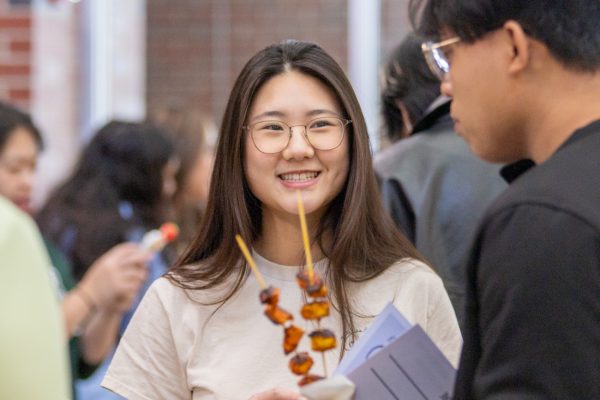Tasting wagyu beef with the Kato family
After flash boiling, the Wagyu beef is best dipped in savory Dashi sauce with Ponzu and mixed veggies.
On Wednesday night’s trek home to my home in Hirakata, I found myself amid the whiz of mopeds and the chatter of blouse-clad grammar school students. My walk through Japan’s Kisaichi District was humid, windy, sweaty, and marked by an ache of hunger.
That hunger was a special one: a desire for meat of unique origin. That morning I was told by my housemates we’d be having the rare Japanese Wagyu beef for dinner.
In the United States, we know Wagyu as Kobe. In Japan, Eating Wagyu represents something special. It’s nothing short of a religious experience.
Wagyu are rare and expensive, especially in Japan. I was lucky enough to try Wagyu alongside locals — the rugby-obsessed, blues guitar-toting Kato family.
Wagyu is more tender than the average beef. It’s known for its marbled fat, which makes it buttery to the taste even without spices. Only 5,000 full-blooded Wagyu cows are grazed, bred, and slaughtered on farms in Japan today. That’s compared to 30.1 million dairy cows that are currently grazed domestically on farms in the U.S., according to the USDA.
What’s more, Wagyu cows are raised with an attention to detail from birth. Every Wagyu is designated a birth certificate. Unlike in the U.S., where cows are issued numbers, Japanese cows are named. Each cow is then fed a diet of rice for upwards of three years before slaughter. The entire time, cattle are clothed in threadbare jackets to protect them from bad weather.
Dinner preparations began at 7:30 a.m. Wednesday morning when an overnight package marked “Black Angus Wagyu: Refrigerate Upon Delivery” arrived at my doorstep. That evening, the Katos and I set the table for a massive course of Wagyu with dashi broth, ponzu sauce and vegetables.
The family of five and I clinked cheers. Raising chopsticks over a steaming pot of miso broth, shiitake mushrooms, lettuce, and onions we awaited the first cut of Wagyu.
Kato-San, father and architect by day and American blues connoisseur by night, joked of the day’s work. Sampling the sweet mushrooms, he showed me how to flash boil a thin cut of Wagyu, swish-dip it in umami sauce, and quickly pop it in my mouth.
Throughout dinner, the Kato family spoke no English. But, they didn’t have to. Their cooking and the Wagyu beef spoke for itself. After boiling in miso, the Wagyu beef was the perfect example of an ambassador dish. Tender, salty, sweet, sour, tangy: Wagyu beef provides it all.
Mixed with veggies and ponzu — sweet plum flavored sauce — the extra thin, almost criminally tender pieces of fatty, amber-colored beef were sublime. The caramel-scented dashi sauce made the taste of the medium-rare beef ignite with a unique, savory flavor that lingers for hours.
Capped off with a beer, the meal and evening with the Kato’s revealed two things to me. Handling your food with care, being gentle and loving it to the point of ascetic dedication, is well worth it. Even more, group experience — from a fine meal to a shared prayer — fosters communication without speaking. During special times like these, we can learn and love with others without a working knowledge of their native tongue.



